Human-first leadership training builds leaders who prioritize people over processes. It teaches leaders to connect with their teams through trust, empathy, and clear communication, resulting in stronger, more effective organizations. This approach moves beyond traditional command styles by emphasizing relationships and genuine care.
Here at The Colonel and The Coach, we combine military discipline with championship coaching to create lasting leadership. Their training shows how leading with humility and purpose can improve team performance and workplace culture. Leaders gain practical skills to listen better, hold themselves accountable, and build trust through consistent actions.
Defining Human-First Leadership Training
Human-first leadership training develops leaders who put people before processes or targets. It builds trust, encourages clear communication, and fosters genuine relationships within teams. This approach contrasts with traditional leadership methods and offers tools that fit today’s fast-paced, diverse workplaces.
Core Principles of Human-First Leadership
Human-first leadership is based on several key principles that help build strong, empathetic leaders who can guide teams toward success:
- People First: Leaders support the well-being and growth of team members above all else.
- Trust: Transparency and consistency create strong team dynamics.
- Communication: Leaders listen actively and speak clearly to guide and support their teams.
- Accountability: Responsibility is shared and done alongside the team, not imposed from above.
- Purpose: Leadership actions connect to a deeper meaning beyond just numbers or results.
This training includes exercises to develop empathy, self-awareness, and relationship skills, empowering leaders to serve their teams with humility and care.
Difference Between Traditional and Human-First Training
Traditional leadership training often focuses on achieving goals through control, hierarchy, and efficiency. It emphasizes rules, rigid structures, and authority. In contrast, human-first training shifts away from command-and-control styles and centers on relationships and emotional intelligence.
Leaders are trained to motivate their teams by understanding individual needs and strengths. The training uses coaching techniques and military-inspired discipline to balance care with precision. Unlike traditional methods, this approach prepares leaders for real-life complexities by building resilience and flexibility in managing people.
Importance in Modern Workplaces
Modern work environments are diverse, often remote, and fast-changing. Human-first leadership is perfectly suited for these settings, improving connection and trust, even from a distance. Employees are more engaged when leaders show empathy and listen carefully.
Leaders trained in this way are better equipped to handle stress, conflict, and change, because they focus on providing support and clear communication. This reduces turnover and boosts team performance.
Programs from The Colonel and The Coach help organizations build these skills by blending discipline and coaching, ultimately creating leaders who put people at the center.
Key Components of Human-First Leadership Training
Human-first leadership training focuses on developing strong, genuine connections by putting people at the center of leadership decisions. It values understanding, clear communication, and diverse input to foster trust and collaboration.
Empathy and Active Listening
Empathy is about understanding and sharing others’ feelings. Leaders practice empathy by paying close attention to team members’ emotions and experiences, avoiding assumptions, and asking open-ended questions for clearer insights.
Active listening is the skill of fully focusing on the speaker, showing understanding through body language, and confirming what is heard by paraphrasing or summarizing. This skill builds trust and prevents misunderstandings.
Together, empathy and active listening create an environment where team members feel seen and valued. Leaders trained by The Colonel and The Coach emphasize these skills to connect deeply with their teams.
Authentic Communication Strategies
Authentic communication means being honest, clear, and consistent. Leaders express their thoughts and feelings openly while respecting others, avoiding vague language or hidden meanings.
Using “I” statements helps leaders own their perspectives rather than blaming or accusing others, reducing defensiveness and encouraging honest conversations.
Nonverbal cues, such as tone of voice and body language, matter as well. Leaders align these cues with their words to avoid mixed messages. Admitting mistakes and being transparent about challenges builds credibility.
Effective authentic communication creates a culture where people feel safe sharing ideas and concerns.
Inclusive Decision-Making
Inclusive decision-making means involving diverse voices in choices that affect the team. Leaders ensure that every team member can contribute. They use structured methods like feedback rounds or anonymous surveys to gather input fairly, reducing bias and helping uncover new solutions.
Leaders listen to all perspectives, especially those that are less frequently heard, showing respect and building trust. They explain how decisions are made, ensuring the process is transparent.
Inclusive decision-making leads to better buy-in and stronger team cohesion.
Benefits of Human-First Leadership Training
Human-first leadership training has a wide range of benefits, including improved teamwork, leadership growth, and workplace culture. It builds trust, communication, and accountability, which in turn helps employees stay motivated, creates a healthier culture, and sharpens leadership skills.
Enhanced Employee Engagement
Human-first leadership boosts engagement by building genuine relationships. When leaders listen and show care, employees feel valued and become more motivated.
Employees who sense their leader’s commitment to their well-being perform better and stay longer. This training encourages leaders to be present, transparent, and responsive to individual needs. It replaces command-driven management with a more collaborative, supportive approach.
Our programs focus on empathy and presence, improving open communication and reducing misunderstandings.
Positive Organizational Culture
A human-first approach cultivates a culture of trust and respect. Leaders set the tone by demonstrating humility and kindness, which spreads throughout the organization. Teams become safe spaces for honest feedback and innovation.
Positive recognition becomes regular, boosting morale and reinforcing good behavior. This culture reduces conflicts and turnover, creating stability, and attracting top talent.
Leaders champion service over control, creating environments where people feel they truly belong, which in turn supports long-term success.
Growth in Leadership Capabilities
Human-first leadership training also helps develop skills beyond task management. Leaders grow in emotional intelligence, self-awareness, and the ability to coach others, balancing mission demands with individual care.
This growth builds confidence to handle complex challenges while maintaining team trust. Leaders become more adaptable and accountable, constantly growing in their ability to connect with their teams.
We blend military discipline and coaching techniques to help leaders become consistent, authentic, and focused on making a meaningful impact.
Designing a Human-First Leadership Program
Creating an effective human-first leadership program begins with understanding the unique needs of the group. From there, clear, focused lessons are built. A mix of teaching methods helps leaders learn better and apply new skills in a real-world context.
Needs Assessment Approaches
A successful program starts by identifying what leaders and their teams need most. Surveys, interviews, and focus groups gather real feedback to uncover challenges such as communication gaps or trust issues.
We use tailored assessments to ensure that programs are specific to the organization’s needs, leading to lasting improvements in leadership behaviors.
Curriculum Development
The curriculum combines practical skills with relationship-building. It focuses on trust, communication, and accountability, framed around people-first values. The modules are simple, actionable, and relatable, with lessons that include active listening techniques, empathy practices, and ways to build psychological safety.
Measuring the Impact of Human-First Leadership Training
Evaluating the success of human-first leadership training requires clear evidence of change, both through data and personal insights. Both quantitative performance metrics and qualitative feedback help measure the effectiveness of the training and inform adjustments.
Performance Metrics
Key performance indicators include team productivity, employee retention rates, and improvements in communication scores. Data is collected before and after the training to identify trends, such as improved goal completion rates or reduced turnover.
We regularly check these metrics to ensure steady leadership growth.
Qualitative Feedback Collection
Qualitative feedback gives deep insights into a leader’s impact on team morale, communication, and overall trust. Collecting feedback through interviews and open-ended survey questions reveals the real-life effects of new leadership habits.
Common themes include increased empathy, better conflict resolution, and stronger team morale. This feedback helps adjust the training for maximum benefit.
Overcoming Challenges in Implementation
Implementing human-first leadership training brings challenges such as resistance to change and maintaining long-term engagement. Addressing these issues head-on will improve the chances for lasting success.
Addressing Resistance to Change
Resistance to change often arises from fear of losing control or discomfort with new leadership styles. Leaders can reduce pushback by clearly explaining the benefits of human-first leadership and showing how it supports everyone’s success.
Ensuring Long-Term Engagement
Sustaining momentum after the initial training is crucial. Regular check-ins, follow-up workshops, and peer support networks help keep leaders engaged and focused on continuous improvement.
Future Trends in Human-First Leadership Development
The future of leadership training lies in personalized, continuous development. Technologies like virtual reality and AI tools are already being used to help leaders practice empathy and decision-making in realistic scenarios. Future programs will focus more on emotional intelligence, inclusivity, and long-term coaching partnerships.
Human-first leadership training empowers leaders to create stronger, more effective teams by prioritizing relationships and authenticity. We blend military precision with coaching wisdom to help leaders build trust, communicate effectively, and grow consistently.
This approach helps create a positive workplace culture that fosters collaboration, innovation, and long-term success. By focusing on empathy, humility, and clear communication, leaders are prepared to face real-world challenges while fostering team engagement and growth.
Frequently Asked Questions
What is human-first leadership?
Human-first leadership is about putting people at the center of decision-making, fostering trust, communication, and accountability.
How can human-first leadership improve workplace culture?
It encourages open communication, builds trust, and fosters a supportive environment where people feel valued.
What are the core principles of human-first leadership?
The core principles include prioritizing people, showing humility, acting with integrity, and focusing on service.
How does human-first leadership improve team performance?
Teams become more motivated and engaged when leaders listen and show respect for their needs, leading to better collaboration and shared purpose.


